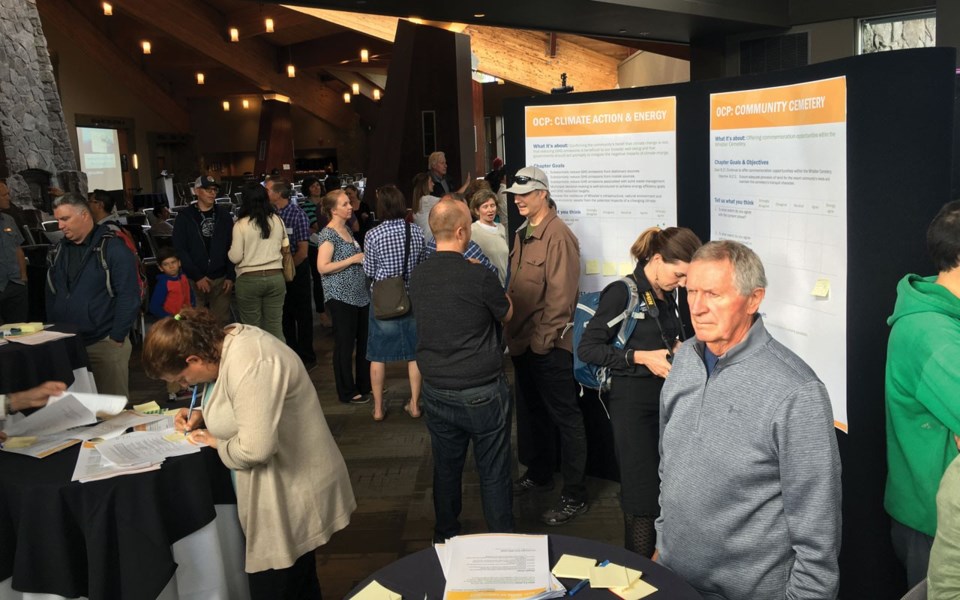"A place where community thrives, nature is protected and guests are inspired."
This is the vision statement of our new draft Official Community Plan (OCP), which continues on its way to adoption—hopefully before the municipal election this October.
This and much more was shared this week at an open house attended by a score of recognizable locals.
Absent were the faces of our young residents—most likely at one of the many jobs they must hold down to afford to live here.
And I didn't catch sight of any First Nations representatives, which is unfortunate as they are such a crucial partner in this journey.
It makes one wonder if the Resort Municipality of Whistler should shake it up a bit as it works to gather community input.
It has created an awesome online portal, where one can submit comments for each of the chapters of the OCP (whistler.ca/MyFutureWhistler), but reaching out to local clubs, such as WORCA, parent groups, maybe even some of the sport organizations such as hockey, gymnastics, or beach volleyball might bring in valuable insights not available at an open house forum.
What stood out from this OCP forum was what has been added: Almost every topic, from the visioning document to our cemetery (let's go green here with compostable caskets) has a few new additions to the plan.
A key segment of the OCP is growth management. Under this heading, we learned that our two local First Nations would receive up to 332 new bed units, presumably to be used as they develop the Kadenwood lands they received in a land swap for their legacy land at Emerald west.
You may recall that the land swap was part of the Feb. 24, 2017 Memorandum of Understanding between the Resort Municipality of Whistler (RMOW), the Squamish and Lil'wat First Nations, Whistler Blackcomb (WB) and the provincial government. While not legally binding, it is a commitment to collaboration.
We all know by now that the 2013 OCP went off the rails in 2014 after our local First Nations challenged the document in court, arguing there was not enough consultation. The B.C. Supreme Court agreed, sending the resort back to the drawing board on its OCP. The Nations' concern was that the OCP set a fixed number of "bed units," which limited the amount of accommodation-related development that could occur in Whistler. The Nations believed that this position would undermine their ability to develop lands in the Whistler area to which they claim Aboriginal rights and title.
The bed units and the development of the homes they represent are key to allowing the First Nations to economically benefit for this roaring tourism engine that is Whistler. They are also a negotiating tool between the two parties, as First Nations aim to take part in the success of the resort and the RMOW works to get the OCP through provincial ministerial review.
In the lead-up to the 2010 Winter Olympic and Paralympic Games, the two nations were granted eight parcels of Crown land within Whistler's boundaries, including some Alpine North lands adjacent to the Rainbow development. In total, the First Nations were granted just under 300 acres of Crown land within the municipality.
The Crown transferred 228 floating bed units to the two nations, while the council of the day in 2007 transferred the left over bed units from the Shoestring redevelopment and from the proposed tennis club redevelopment to First Nations. In total, Squamish and Lil'wat Nations received 452 bed units, or the development potential for 75 detached homes. This is added to the new 332 units adding the potential for another 55 detached homes. (Each single-family home requires six bed units.)
Of course, any development has to go through the municipal process, which is a rigourous one.
This same section of the OCP also talks of support for up to 1,000 additional bed units for employee housing.
(While we are touching on that—and as the RMOW continues with plans to develop Cheakamus—how are all these new residents and all the construction workers building the homes going to manage with a one-lane bridge in and out of the neighbourhood?)
These are much needed and more. We know that our population has grown from 10,333 in 2011 to 11,854 last year. And out daily population, which includes visitors, has gone from 26,361 in 2011 to 36,306—you need a lot of workers and services for this many people in a small resort town.
The OCP in its latest tableau is robust and encompassing. Take the time to read the online version and weigh in.
After all, it's all about us.




